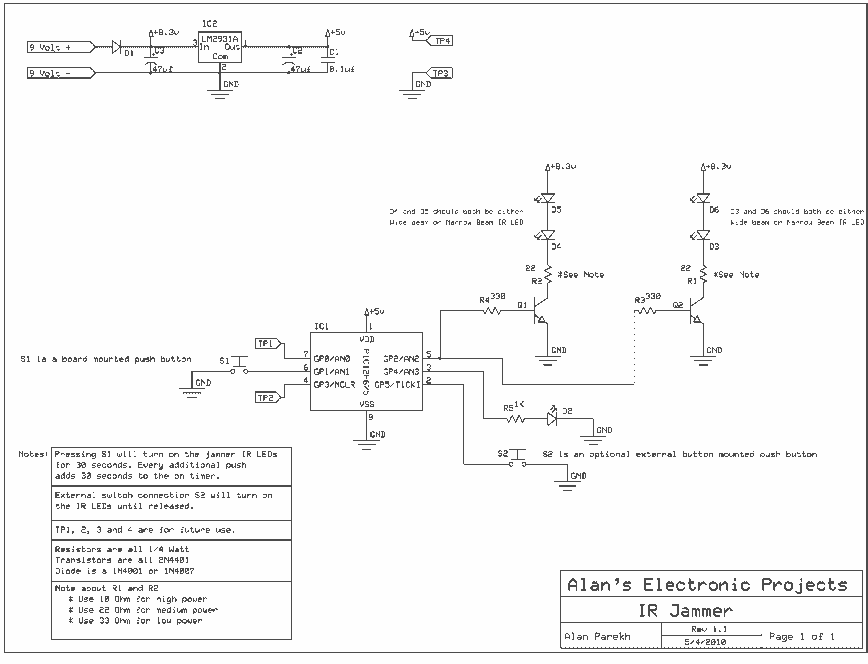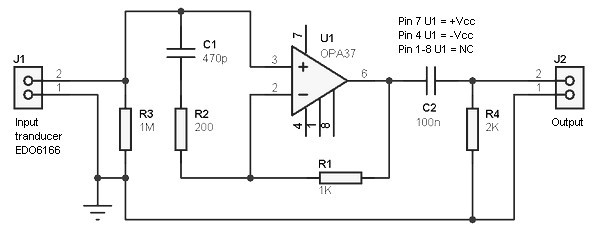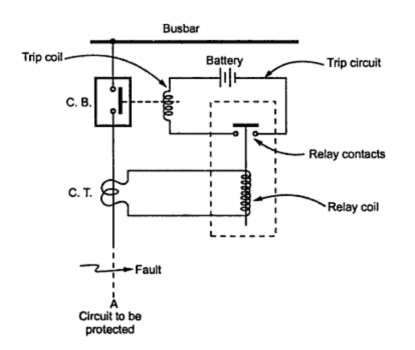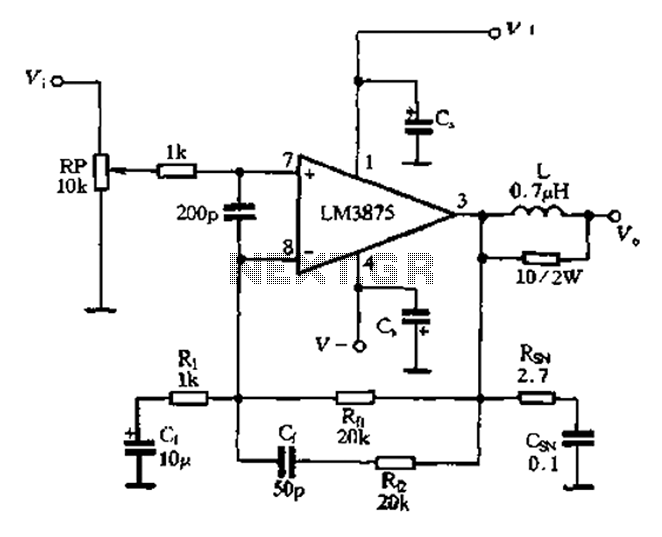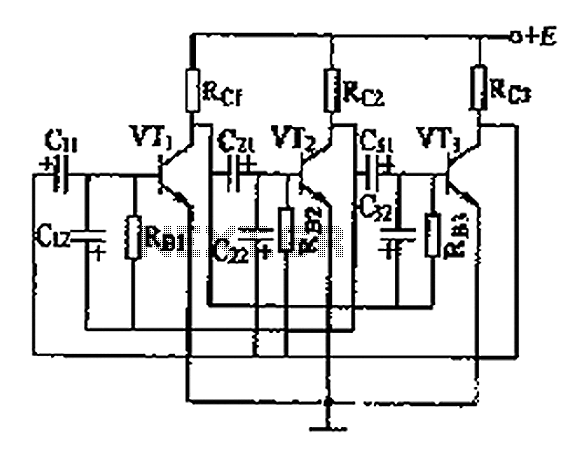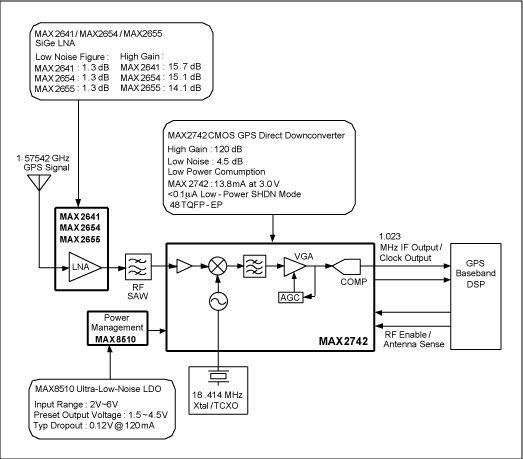
Basic circuit diagram of a 2.4 GHz radio system-on-chip CC2430
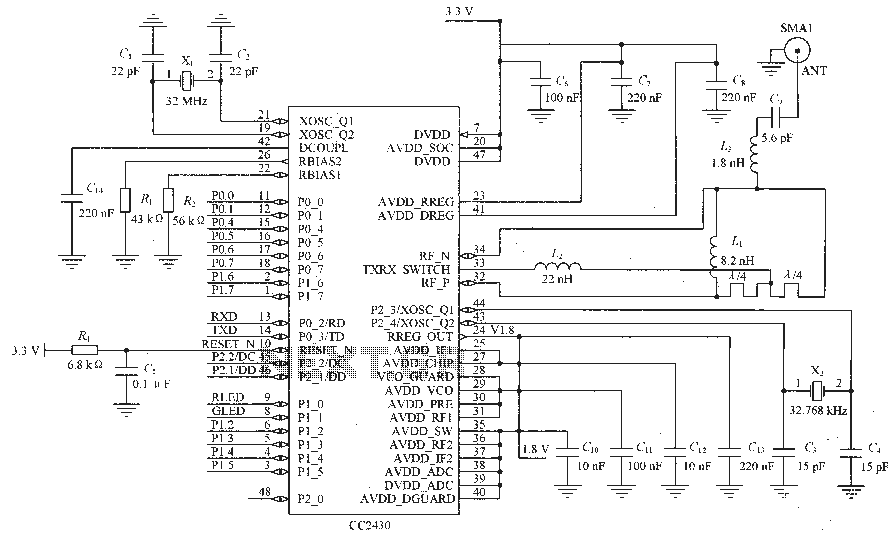
Figure C1 and C2 depict a 22 pF capacitor connected to a 32 MHz crystal oscillator circuit, which utilizes a quartz crystal for standard operation. Capacitors C3 and C4, each rated at 15 pF, are connected to a 32.768 kHz crystal oscillator circuit that operates in sleep mode to reduce power consumption. Capacitor C5 is rated at 0.1 µF and is used to filter out noise, preventing erroneous resets of the microcontroller. Capacitors C6, C7, and C8 are rated at 100 nF and 220 nF, serving as filters to eliminate noise and ensure a stable voltage. Capacitor C9, valued at 5.6 pF, is part of an unbalanced transformer circuit alongside inductors L1, L2, and L3, which are connected to a microwave transmission line on a PCB. This configuration adheres to the RF input/output matching resistor requirements of 50 ohms, with inductors L1, L2, and L3 having values of 8.2 nH, 22 nH, and 1.8 nH, respectively. Capacitors C10, C11, C12, C13, and C14 function as decoupling capacitors for power supply filtering, enhancing the stability of the chip's operation. Bias resistors R1 and R2 are rated at 43 kΩ and 56 kΩ, respectively, with R1 setting the precision bias current for the 32 MHz crystal oscillator. The CC2430 chip, which features low power consumption, is powered by two 800 mAh batteries at the node. An external antenna is selected for the design.
The schematic includes various capacitors and inductors that play critical roles in the performance of the oscillator circuits and overall system stability. The 22 pF capacitors at the 32 MHz oscillator ensure that the frequency remains stable and accurate for standard operations, which is essential for timing applications. The 15 pF capacitors connected to the 32.768 kHz oscillator are particularly important for low-power modes, allowing the device to conserve energy while maintaining functionality during sleep states.
Noise reduction is a significant consideration in this design, as evidenced by the use of multiple capacitors for filtering. Capacitors C5, C6, C7, and C8 filter out high-frequency noise that could disrupt the microcontroller's operation, while C9's role in the unbalanced transformer circuit is crucial for impedance matching, ensuring efficient signal transmission and reception in RF applications.
The inductors L1, L2, and L3 are carefully chosen to match the required inductance values for the circuit, optimizing the performance of the microwave transmission line. The values of these inductors indicate a design that is tuned for specific RF characteristics, which is vital for maintaining signal integrity.
Decoupling capacitors C10 to C14 are strategically placed to stabilize the power supply, mitigating voltage fluctuations that could affect the microcontroller's performance. The bias resistors R1 and R2 are selected to provide the necessary bias current, ensuring that the oscillators operate within their intended specifications.
Overall, this circuit design exemplifies a comprehensive approach to oscillator circuit design, focusing on stability, efficiency, and noise reduction, which are critical for modern electronic applications. The choice of components and their configurations reflect an understanding of RF principles and low-power design strategies, making this circuit suitable for various applications requiring reliable timing and communication capabilities.Figure C1, C2 is 22pF capacitor connected to 32 MHz .png">crystal oscillator circuit , the use of quartz crystal oscillator for normal operation. C3, C4 is 15 pF capacitor connected to the 32.768 kHz crystal oscillator circuit, quartz crystal for this work in sleep mode, reducing power consumption. C5 = 0.1 F, for removing some of the clutter, to prevent the microcontroller error reset. C6 ~ C8 were 100 nF, 220n F, 220 nF, used as a filter to remove clutter to make a more stable voltage.
C9 = 5.6 pF, Unbalanced transformer circuit by the capacitor C9 and inductor L1, L2, L3 and microwave transmission line consisting of a PCB, the entire structure to meet the RF input / output matching resistor (50 ) requirements, L1, L2, L3, respectively 8.2 nH, 22 nH, 1.8 nH. C10, C11, C12, C13, C14 as decoupling capacitors for power supply filtering, to improve the stability of the work of the chip.
Bias resistor R1, R2 respectively 43 k , 56 k , R1 is used to set the 32 MHz crystal oscillator precision bias current. Since the CC2430 chip has low power consumption, use 2 2 800 mAh of battery power the node. External antenna antenna choice.
The schematic includes various capacitors and inductors that play critical roles in the performance of the oscillator circuits and overall system stability. The 22 pF capacitors at the 32 MHz oscillator ensure that the frequency remains stable and accurate for standard operations, which is essential for timing applications. The 15 pF capacitors connected to the 32.768 kHz oscillator are particularly important for low-power modes, allowing the device to conserve energy while maintaining functionality during sleep states.
Noise reduction is a significant consideration in this design, as evidenced by the use of multiple capacitors for filtering. Capacitors C5, C6, C7, and C8 filter out high-frequency noise that could disrupt the microcontroller's operation, while C9's role in the unbalanced transformer circuit is crucial for impedance matching, ensuring efficient signal transmission and reception in RF applications.
The inductors L1, L2, and L3 are carefully chosen to match the required inductance values for the circuit, optimizing the performance of the microwave transmission line. The values of these inductors indicate a design that is tuned for specific RF characteristics, which is vital for maintaining signal integrity.
Decoupling capacitors C10 to C14 are strategically placed to stabilize the power supply, mitigating voltage fluctuations that could affect the microcontroller's performance. The bias resistors R1 and R2 are selected to provide the necessary bias current, ensuring that the oscillators operate within their intended specifications.
Overall, this circuit design exemplifies a comprehensive approach to oscillator circuit design, focusing on stability, efficiency, and noise reduction, which are critical for modern electronic applications. The choice of components and their configurations reflect an understanding of RF principles and low-power design strategies, making this circuit suitable for various applications requiring reliable timing and communication capabilities.Figure C1, C2 is 22pF capacitor connected to 32 MHz .png">crystal oscillator circuit , the use of quartz crystal oscillator for normal operation. C3, C4 is 15 pF capacitor connected to the 32.768 kHz crystal oscillator circuit, quartz crystal for this work in sleep mode, reducing power consumption. C5 = 0.1 F, for removing some of the clutter, to prevent the microcontroller error reset. C6 ~ C8 were 100 nF, 220n F, 220 nF, used as a filter to remove clutter to make a more stable voltage.
C9 = 5.6 pF, Unbalanced transformer circuit by the capacitor C9 and inductor L1, L2, L3 and microwave transmission line consisting of a PCB, the entire structure to meet the RF input / output matching resistor (50 ) requirements, L1, L2, L3, respectively 8.2 nH, 22 nH, 1.8 nH. C10, C11, C12, C13, C14 as decoupling capacitors for power supply filtering, to improve the stability of the work of the chip.
Bias resistor R1, R2 respectively 43 k , 56 k , R1 is used to set the 32 MHz crystal oscillator precision bias current. Since the CC2430 chip has low power consumption, use 2 2 800 mAh of battery power the node. External antenna antenna choice.
